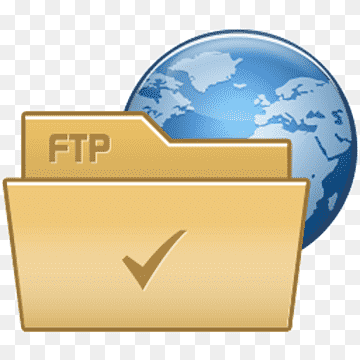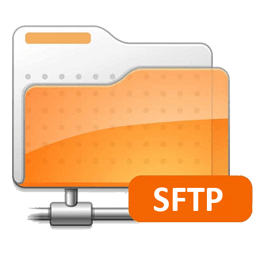SFTP Port
What is FTP
File Transfer Protocol is referred to as FTP. FTP facilitates direct file transfers between your preferred FTP client and your web server using the client/server architecture.
A command channel and a data channel are the two different channels used by FTP to transport data. Both of these channels are by default unencrypted, which means that nefarious parties may be able to listen in on the data you’re sending.
What is SFTP
Although it is sometimes known as Secure File Transfer Protocol, SFTP is the abbreviation for SSH File Transfer Protocol.
The cryptographic protocol known as SSH, or Secure Shell, allows for safe access to a machine (in this example, your server) through insecure networks.
Using SFTP, you may authenticate your client using either a login and password or SSH cryptographic keys and just one channel.
What are the difference between sftp and ftp.
- In contrast to SFTP, which offers a secure channel for file transfers between sites, FTP does not offer such a channel.
- File Transfer Protocol (FTP) and SSH File Transfer Protocol (SFTP) are acronyms for different protocols.
- While transferring data, FTP uses two channels whereas SFTP just uses one.
- FTP permits incoming connections on port 21, but SFTP permits them on port 22.
- FTP doesn’t offer encryption, however SFTP does, so that data may be sent securely.
- SFTP uses SSH architecture while FTP uses client-server architecture.
- Whereas SFTP uses a tunnelling transfer mechanism, FTP uses a direct transfer method.
SFTP Port
SFTP is Secure File Transfer Protocol (SFTP) it uses for transferring large files over the web.It runs over the SSH protocol. It supports the full security and authentication functionality of SSH.
SFTP usually runs on Port 22 but we can assign whatever port we want.
FTP Port
Use port number 21 for your FTP connection by default. You can also change this default setting and use a different FTP port. But, you need administrator access in order to make this change.
SFTP Client for Windows and Mac
Many SFTP client implementations are available. Many SSH clients support SFTP.
-
Tectia SSH Client
-
WinSCP
-
FileZilla
-
PuTTY
-
Cyberduck
SFTP Server for Linux, Windows, and Mac
SFTP server usually comes as part of an SSH implementation. Most organizations use either Tectia SSH or OpenSSH as the server; both come with SFTP server implementations out-of-the-box.
-
Tectia SSH Server for Windows
-
Tectia SSH Server for IBM z/OS mainframes
-
OpenSSH – open source server for Linux & Unix
-
FileZilla – a free sftp server for Windows
Changing the SFTP Port
Changing the default SFTP/SSH port adds an extra layer of safety to your server by reducing the risk of automated attacks.
Configure your firewall to allow only trustworthy hosts access to port 22, and set up SSH key-based authentication to protect your server from attackers.
The steps below will show how to change the SSH port on a Windows machine.
- Choose a New Port Number
- Adjust Firewall
- Configure SFTP/SSH
- Use the New SFTP Port
By default, the SFTP port is 22. You may, however, change the port number to anything you like.
If you frequently connect to several servers, you could improve the process by defining all of your connections in the SSH settings.
Advantages of SFTP
The advantages of SFTP are listed below.
- SFTP can be used to transfer sensitive data between two devices/hosts/servers.
- You may also run the audit report and share it with several organisations and regulatory agencies.
- The SFTP tool may also be used to create, delete, import, and export files and folders. You may take use of its capabilities to store and share large data files, as well as its flexibility to access them from anywhere using suitable credentials.
- SFTP is frequently used in cloud computing, with apps such as SEEBURGER and Cyberduck using it.
- Filezilla and WinSCP are two extensively used SFTP clients that are widely used in organisations for file management and sharing.
- You may even exchange files between two servers in secret by adding an additional security level to authenticate.
- The credentials of the users are encrypted with SFTP, making it more safe.
- SFTP uses key-based authentication to give an additional layer of protection to usernames and passwords, making SFTP more secure.
- SFTP ensures security by transferring data over a single server connection without opening additional server ports.
- It offers specific information about the files being transferred, such as the date, time, and size, which aids in troubleshooting.
Disadvantages of SFTP
Using SFTP isn’t only about the benefits; there are certain limits to consider. Some things to think about are listed below.
- Managing SSH keys is not as simple as it appears.
- To secure the private keys from theft or loss, keep them on the device to which you are transferring the files.
- Setting the SSH keys will require the assistance of a system administrator.
- You must understand how SSH works and run the appropriate instructions on the command-line terminal.
So, that’s all in this blog. I will meet you soon with next stuff .Have a nice day !!!
Recommended contents
How to Check the Active Directory Database Integrity
Disabling and Enabling the Outbound Replication
DFS Replication Service Stopped Replication
What is Strict Replication Consistency
The replication operation failed because of a schema mismatch between the servers involved
Troubleshooting ad replication error 8418 the replication operation failed because of a schema mismatch between the servers
How to export replication information in txt file
Repadmin Replsummary
Enabling the outbound replication
Disabling and enabling replication on schema master domain controller
How to enable strict replication consistency
How to prevent lingering objects replication in active directory
AD replication process overview
How to force active directory replication
Change notification in replication process
How to check replication partner for a specific domain controller
dcdiag test replications
Guys please don’t forget to like and share the post.Also join our WindowsTechno Community and where you can post your queries/doubts and our experts will address them .
You can also share the feedback on below windows techno email id.
If you have any questions feel free to contact us on admin@windowstechno.com also follow us on facebook@windowstechno to get updates about new blog posts.


